Blog
August 2017
Alan Graham is a member of the Documentary Group of the Royal Photographic Society and the vice chairman of the Orpington Photographic Society. His research for the ‘Refocusing Perspectives’ project considers the casualty evacuation chain for the Battle of the Somme.
‘The Highway of Suffering,
The casualty evacuation chain of the First World War - Then and Now’
The Battle of the Somme started on 1st July 1916 and became the largest battle of the Western Front. Between the first and last day, on the 18th November 1916, over 3 million men were to take part with one million becoming a casualty. The British Army suffered 57,4702 wounded or killed on the first day, the worst in its history.
During and after each offensive it was the role of the Royal Army Medical Corp (RAMC) to venture out to collect the wounded together with the Regimental Stretcher Bearers. Each Division of the British Army had 3 RAMC Field Ambulances which consisted of stretcher bearers, doctors, and auxiliary staff. The aim was to move the wounded away from the front line along the Evacuation Chain. Each stage was to provide help and to assess the wounded. At any point, the wounded could be deemed fit enough to return to the front. The more serious the injury the further back they went until they might end up in England or a local graveyard.
On Monday 9th October 1916 the 10th Cheshire Regiment of the 25th Division attacked and captured a German strong point called Stuff Redoubt just north of the village of Thiepval. Previous attempts had been tried and failed but on this occasion, their attack only took minutes to succeed.
The Cheshire Regiment was relieved later that day but the supporting 76th Field Ambulance continued on the front line for the next few days3.
One of their stretcher bearers, Private 39227 Thomas Whiston, received a gunshot wound to the foot during the day and was evacuated back to ‘Blighty’. My plan is to use his evacuation back to England as an example of the journey undertaken.
Not all of the journey can be recreated with a ‘Then and Now’ set of images but many stages can. During my research, I have found many images simply can't be replicated to the standard I have set myself. It is not that a location has changed beyond recognition but the photographer’s viewpoint has been lost either by a building or more commonly by trees.
I have allowed myself three levels of ‘Then and Now’ comparisons. Firstly a true match of the original image that can be overlaid faithfully. Secondly, images that have been taken from the same angle but maybe from a different height. Thirdly a far looser interpretation were images have been taken in the same vicinity to give a general view of the area (see Fig.1).
For the purpose of continuity, I will include a forth type of image, original examples of modes of transport and venues that have been lost to history but are a vital piece of evidence and link in the journey.
Notes:
- ‘The Highway of Suffering’ is a term used in ‘The Great War’ (Vol.8 p.313) published in 1917 as edited by HW Wilson. Own copy.
- http://www.iwm.org.uk/history/what-happened-on-the-first-day-of-the-battle-of-the-somme
- 76th Field Ambulance war diary © National Archives
Battlefield - Regimental Aid Post
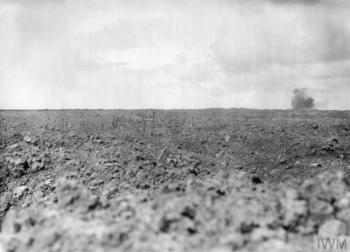
Figure 1: No Man's Land, The Somme. Both images were taken within a mile of each other between Mouquet Farm (Then) and Grandcourt CWGC Cemetery (Now) at the site of Stuff Redoubt. © IWM (Q 1379) Image used under the IWM Non-Commercial License permissions.
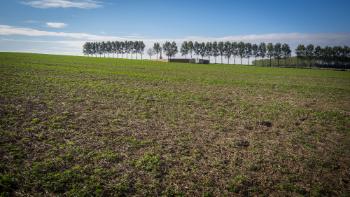
© Alan Graham, Stuff Redoubt (Grandcourt) 2016
Figure 1 is of "No Man's Land" in front of the trenches near Mouquet Farm, September 1916. In the background a British shell can be seen bursting on German trenches. The farm was just 1 mile from Stuff Redoubt. It shows the barren wasteland that is void of any living vegetation. Today it has long returned to agricultural land. The rolling contours gave an advantage to those dug in on the ridges. The Germans had spent nearly two years fortifying their positions and Stuff Redoubt had a warren of underground tunnels and chambers which could be defended by very few soldiers.
My image was taken from the opposite direction looking back at the redoubt and Mouguet Farm beyond. The graveyard in front of the line of trees is Grandcourt CWGC cemetery where the fallen from the battle are buried. This was taken 100 years to the minute of the battle starting.
Collecting Post/Light Railway.
Thomas, together with any other casualties, would have been carried back by stretcher towards
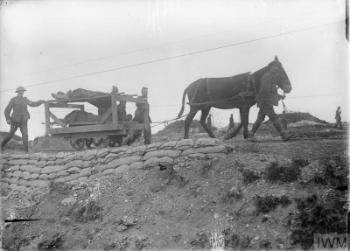
Mouquet Farm where nearby a light railway had been installed. See Figure 2.
Figure 2: A light railway line ran from near Mouquet Farm south towards Crucifix Corner near the village of Aveluy. Each end would have had a Collecting Post or Relay Post where stretcher bearers would have handed over their charges. October 1916 © IWM (Q 1348) Image used under the IWM Non-Commercial License permissions.
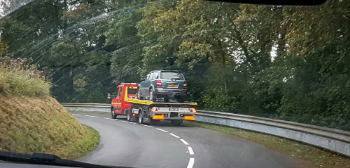
© Alan Graham. A touch of irony as my broken car was transported past Crucifix Corner, Aveluy. October 2016.
Advanced Dressing Station - Chateau Aveluy/Bouzincourt
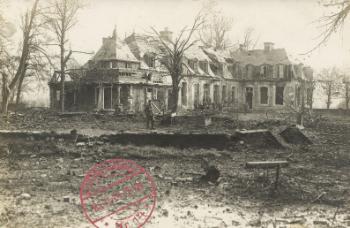
Figure 3: Postcard of Chateau Aveluy (c.1916). The chateau was commandeered by the 76th Field Ambulance as an Advanced Dressing Station during the attack on Stuff Redoubt.
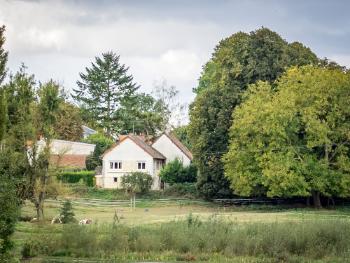
© Feldpost 14 (Flickr) used with permission.
© Alan Graham. The site of Chateau Aveluy Oct 1916.
By the 10th October 1916 Thomas had been passed along the line to No.3 Casualty Clearing Station at Puchevillers. His comrades at the 76th were making plans to move back as the chateau continued to be bombarded by German artillery (see Figure 3), as their war diary tells:
“AVELUY 10.10.16
9am: Very heavy shelling continues all night. Corner ... front of building struck – Also one shell striking foot of wall in front of dressing room used for sitting wounded several patents and MO being inside but mercifully no casualties – Shells in constant stream just missing the building – Rang up A.D.M.S. informing him of same and my fear of heavy casualties to wounded sooner or later, asking him to come over and decide about same. ....he had already made arrangements for our leaving to go to BOUZINCOURT….”
Extract from 76th Field Ambulance War Diary © National Archives
This journey will continue thorough Bouzincourt, Puchevillers, via train to Boulogne and across to England where transport, hospitals and convalescence will be explored.
